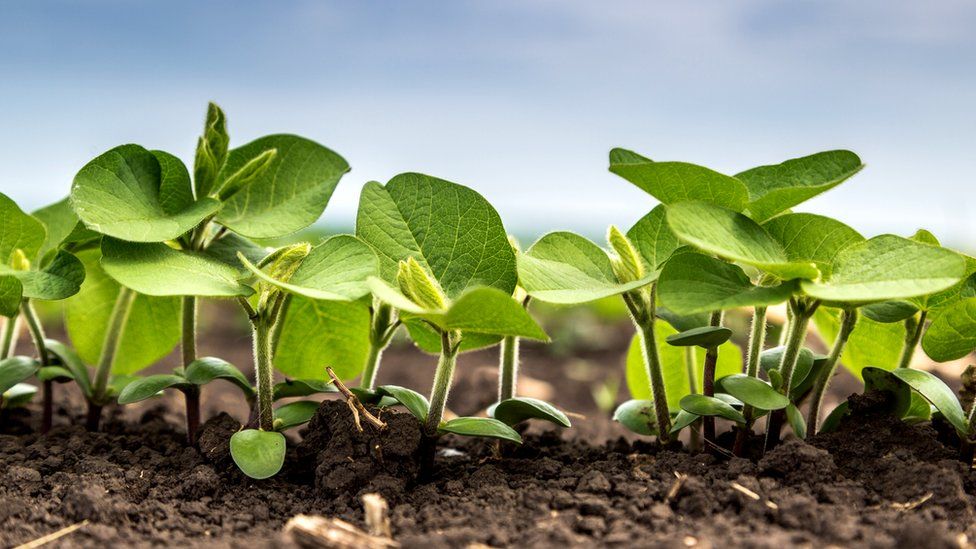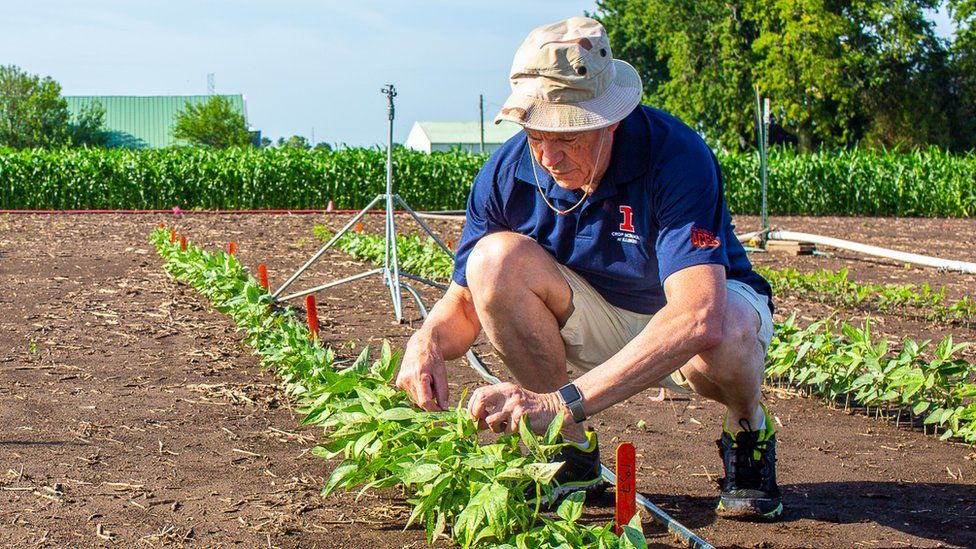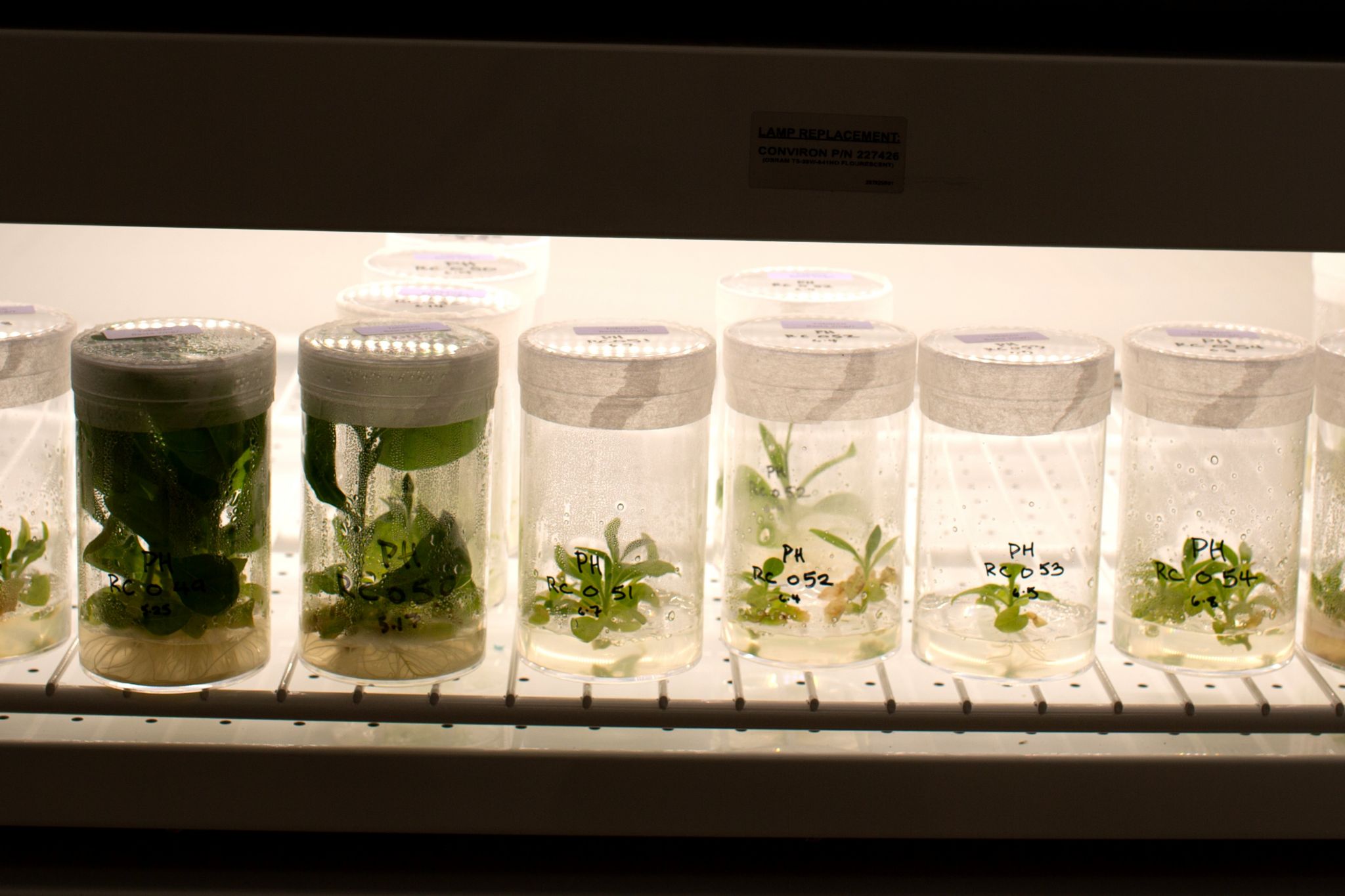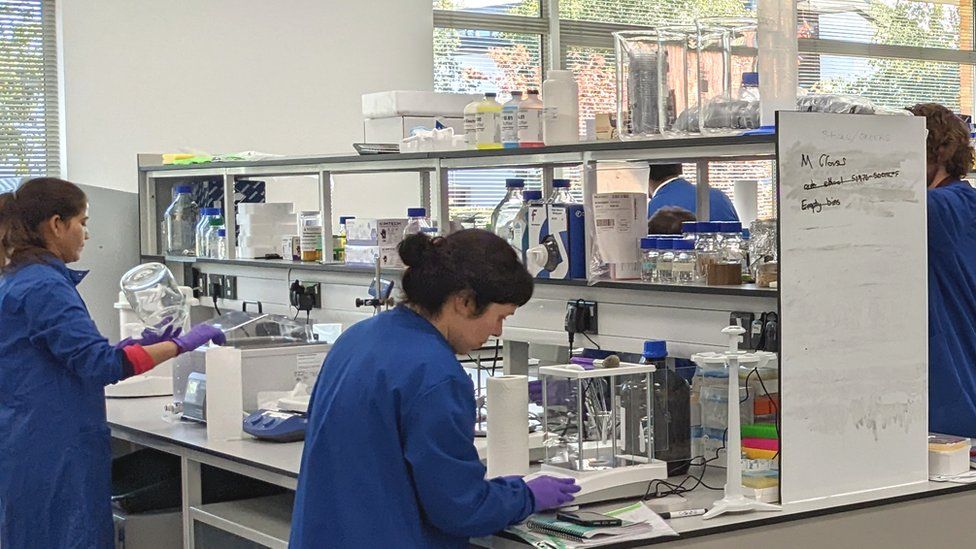The turbo-charged plants that could boost farm output

According to the UN Food and Agriculture Organization, almost three-in-ten people around the world went short of food in 2022, with more than a tenth severely food insecure.
Improving plant yields is one way to cut the shortfall, and there have been great advances. But while maize yields, for example, have tripled over the past hundred years, so has water usage.
“We need to be able to increase productivity without increasing further demand, particularly in terms of water,” says Prof Steve Long of the University of Illinois.
One aspect of plant growth that hasn’t seen significant improvement is conversion efficiency – how effectively a plant converts solar radiation to biomass through photosynthesis.
Prof Long says that photosynthesis in current varieties of crops, like wheat and soybeans, has barely improved in decades.
He is principal investigator and director of a project called Realizing Increased Photosynthetic Efficiency (Ripe), which aims to genetically tweak plants to increase their yields by improving their ability to photosynthesise.

The efficiency of photosynthesis in crop plants is well below the theoretical maximum, but has been hard to influence thanks to the complex nature of the process – there are more than 100 steps, coded for by even more genes, giving millions of potential permutations.
Prof Long and his team have used powerful computers to build a digital twin of the photosynthesis process. It can tweak that process in millions of ways.
From those millions of options the software can identify those that will make the biggest improvements.
“We then engineered these into crops, and if that results in an improvement in the glasshouse, then we take it to our experimental farm and test it in a real-world environment,” says Prof Long.
That’s already had promising results. Changes to the mechanism of photosynthesis in soybean plants have resulted in yield improvements of more than 20% in controlled environments, with field trials now underway.
One focus of the work is tweaking the way plants respond to changes in light levels.

The team has been working with three genes that code for proteins of the xanthophyll cycle. This occurs as leaves move from light to shade, preventing the plant from absorbing more light than it can use.
However, this process can take several minutes – and Ripe’s gene changes mean that plants can adjust to changes in light levels more quickly.
Other teams around the world are also trying to pump-up photosynthesis.
Wild Bioscience, a spinout from Oxford University, is working to improve the proportion of each leaf that can photosynthesise, by ramping up the expression of a gene found in wild plants.
The process involves sophisticated computational biology: “What we’re doing is trying to reverse engineer the naturally occurring upgrades to photosynthesis that are out there in the wild, so we can copy them in crops,” says co-founder Ross Hendron.
Often, that gene is already present in the plant, and can be activated in different areas.
“We can look at wheat and find that gene is already in the wheat genome, it’s just on in the wrong place,” says Mr Hendron. “So when we want to improve this particular process in this part of the plant, what we need to do is flick on a switch and turn that gene on in that location.”

Another example is a gene found in maize that helps the plant carry out what’s known as C4 photosynthesis, a particularly efficient form of photosynthesis that’s also found in millet; Wild Bioscience has activated it in wheat.
The company is working on wheat, soybean and maize, and has achieved increases of more than 20% in seed biomass, with field trials currently under evaluation. If all goes well, says Mr Hendron, crop plants could be available commercially by around 2030 or 2031.
Both Ripe and Wild BioSciences are engaged in gene editing. It involves switching genes on and off by removing DNA, and is different from genetic modification (GM), which involves importing genes from other species.
Earlier this year the UK government relaxed the regulation of gene-edited crops to enable commercial growing in England.
The regulation of gene-edited and GM crops differs from country to country, with the European Union having the strictest rules.
Campaigners have long fought against the introduction of GM crops and are resisting gene-edited crops as well.
“This unproven science offers only a potential short-term relief of the symptoms of an unsustainable farming industry. In the meantime, it is diverting time, investment and attention away from real and already-proven solutions,” Friends of the Earth Europe said in a report, titled Editing the Truth.
Researchers at Imperial College London are not at the stage of doing any gene editing yet.
They are in the early stages of investigating whether plants can be engineered to photosynthesise using lower-energy far-red light instead of visible light.
“There is potential under some circumstances, but we are still in the early phases of working out how it works and what are the pros and cons,” says Prof Bill Rutherford of the Department of Life Sciences.

Some scientists are cautious about what’s actually achievable in terms of crops in the field.
Matthew Paul, principal research scientist at agricultural research institution Rothamsted Research, suggests that increasing leaves’ photosynthetic ability could simply result in smaller leaves, and that high rates of photosynthesis could mean more water loss, meaning plants would need more irrigation.
“For any GM or gene editing approach to have widespread impact it would need to be reproduced in varieties grown in different regions. Subtleties of expression control and interaction with genetic background of each variety will make this tricky,” he says.


With work still in the early stages, it remains to be seen how much commercial yields can be improved through changes to photosynthesis.
However, Mr Hendron says different techniques could be used in combination to even greater effect.
“We know these are stackable improvements that can drive further and further increases,” he says.
So there will be other technologies out there – Ripe will be one of them – so we can say both of us are doing this individually, but how much more powerful is this in combination?”

